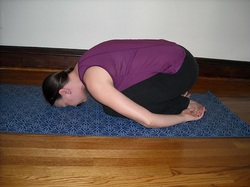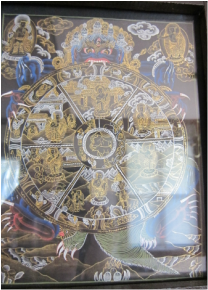If a yoga pose seems out of your reach, think again. Many poses can be modified to work with your current range of motion with the use of a prop.
Iyengar yoga encourages the use of props to make poses accessible to everyone regardless of your body’s current range of motion. Props are a functional and safe way to hold a position, which otherwise might cause damage to a particular area of the body because of muscular strain or overstretching created by the position.
Listed below are typical yoga props and potential applications:
• Yoga block: It can be turned flat, on the edge, or the end for back relief in some supine poses or to steady other standing poses by creating a stable platform.
• Yoga strap: The buckles on the straps can be adjusted to hold limbs in place while practicing a variety of poses. Apply it when you want to maintain alignment or deepen a stretch.
• Blankets: This prop is frequently found in yoga studios to give an extra lift or cushion to seated poses, stacked to elevate the legs, or to cover the body as it cools down in savasana during relaxation.
• Yoga bolster: This large, firm cushion is often used for support in restorative poses such as viparita karani (legs up the wall pose) to alleviate discomfort in the lower back.
• Balls: Utilizing a ball can be a boon for alignment and core muscle development.
• Chairs: This prop isn’t limited to senior yoga, most people can benefit from its employment from facilitating better twists to bending back upon for wider chest openings.
• Wall: For beginners, inversions such as headstand and handstand using a wall can be a secure support for learning to trust and develop your strength and balance. Think of the wall as a partner, and you can push off it, lean on it, align a pose against it, or press into it.
• Sandbags: Here’s an effective way to give weight to a pose and deepen a stretch. Legs can release further to the floor in a bound angle pose by placing a sandbag on the inner thighs. Sandbags can bring a breath of fresh air (pun intended) to breathing exercises. Put the sandbag on your belly to foster a stronger awareness of the abdominal muscles and improve the breath.
• Eye pillow: By placing an eye pillow over your eyes during relaxation, it can be a pleasant way to soothe tired eyes and block out light. Eye pillows filled with lavender, which is known as a calming agent, are also popular for therapeutic purposes.
Go ahead, give your form a boost and take the strain out of seemingly unattainable poses.
Follow us on Facebook and Twitter. For yoga in Dunellen, NJ or yoga in Piscataway, NJ and yoga in other Central New Jersey areas, get in touch with me at Yoga Destiny.
Iyengar yoga encourages the use of props to make poses accessible to everyone regardless of your body’s current range of motion. Props are a functional and safe way to hold a position, which otherwise might cause damage to a particular area of the body because of muscular strain or overstretching created by the position.
Listed below are typical yoga props and potential applications:
• Yoga block: It can be turned flat, on the edge, or the end for back relief in some supine poses or to steady other standing poses by creating a stable platform.
• Yoga strap: The buckles on the straps can be adjusted to hold limbs in place while practicing a variety of poses. Apply it when you want to maintain alignment or deepen a stretch.
• Blankets: This prop is frequently found in yoga studios to give an extra lift or cushion to seated poses, stacked to elevate the legs, or to cover the body as it cools down in savasana during relaxation.
• Yoga bolster: This large, firm cushion is often used for support in restorative poses such as viparita karani (legs up the wall pose) to alleviate discomfort in the lower back.
• Balls: Utilizing a ball can be a boon for alignment and core muscle development.
• Chairs: This prop isn’t limited to senior yoga, most people can benefit from its employment from facilitating better twists to bending back upon for wider chest openings.
• Wall: For beginners, inversions such as headstand and handstand using a wall can be a secure support for learning to trust and develop your strength and balance. Think of the wall as a partner, and you can push off it, lean on it, align a pose against it, or press into it.
• Sandbags: Here’s an effective way to give weight to a pose and deepen a stretch. Legs can release further to the floor in a bound angle pose by placing a sandbag on the inner thighs. Sandbags can bring a breath of fresh air (pun intended) to breathing exercises. Put the sandbag on your belly to foster a stronger awareness of the abdominal muscles and improve the breath.
• Eye pillow: By placing an eye pillow over your eyes during relaxation, it can be a pleasant way to soothe tired eyes and block out light. Eye pillows filled with lavender, which is known as a calming agent, are also popular for therapeutic purposes.
Go ahead, give your form a boost and take the strain out of seemingly unattainable poses.
Follow us on Facebook and Twitter. For yoga in Dunellen, NJ or yoga in Piscataway, NJ and yoga in other Central New Jersey areas, get in touch with me at Yoga Destiny.




